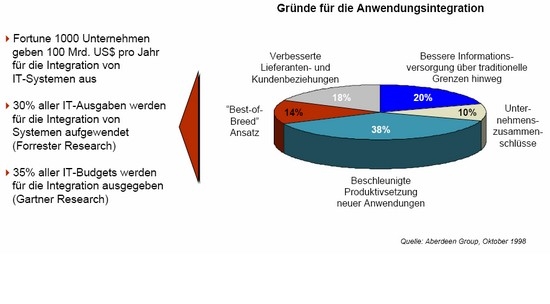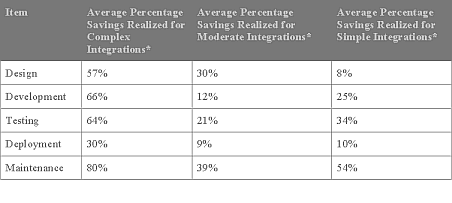- Are you challenged by changes to data formats in interfaces?
- Can all application data interfaces be managed centrally across the enterprise?
- How can the quality and availability of application integrations be increased?
- How can time-intensive interface developments be shortened?
- How can the development of interfaces be standardized?
- Are individual data integrations in business processes business-critical?
- Are industry standards for data exchange part of your integration landscape?
Today, the automation of business processes can be flexibly designed by using different IT application systems and technologies. A best-of-breed approach often forms the basis for this. In this way, the agility of business processes is supported and increased by a distributed way of handling the processes. The associated complexity of interfaces and process integration, whether purely in the background processing or combined in the backend and frontend, must be constantly adapted to the current conditions. We support your company in the selection, conception, implementation and daily support of custom-fit integration solutions - whether open source or commercial solutions.
Most of the processes involved in the business activities of today's companies are supported by IT systems and various applications or are already partially automated. The distribution of these processes to different business partners or possibly independent divisions creates scenarios in which the current business processes must be constantly adapted. In addition, the IT communications and collaborations involved, which exist or are planned across system, department and company boundaries, must also be adapted or created. Due to a heterogeneous internal IT application structure or an external division of labor, there is the complex challenge of mapping these processes through distributed IT systems. As a result, an increased degree of application integration becomes necessary and the flexibility of integration realization needs to be extended. This is due in particular to the requirement for increased agility in business process execution.
How to get a handle on this complex issue?
Technology alone does not provide an adequate solution to the challenges that arise. Only a methodical approach can ensure a high-quality design of a scalable integration architecture and thus the practical setup, the cost-effective further development and especially the efficient operation of the platform.
To build such integration scenarios, X-INTEGRATE uses established methods and techniques and develops them to suit the respective areas of application. Already in the 2000s we use the method Baseline - a methodology proven in Scandinavia for years for the fast and successful integration of information systems at medium-sized companies and international corporations. Based on this experience, we develop numerous prefabricated assets or package solutions and thereby offer a high-quality architecture design and the practical construction of an ESB or microservice-oriented integration solution. This ensures the cost-effective development and efficient operation of a scalable integration architecture. References are available particularly in the areas of industry, automotive, trade, telecommunications and financial services.
Enterprise Integration with the right methods
An integration platform operated in accordance with our empirical values ensures the agility of the IT-supported business process environment and is therefore highly valuable in the context of Business Process Integration, as part of BPM. With Business Process Integration, companies can react dynamically and quickly to changing conditions - and save money in the process.
Our Enterprise Integration Technologies:
Integration
- Enterprise Application Integration
- Electronic Data Interchange / B2B
- Machine-to-Machine (M2M) / IoT
- SaaS & Cloud Service Integration
- Microservice ESB
- Service Oriented Architecture
Connectivity
- Message Queuing
- Managed File Transfer
- Security
- Internet of Things (IoT)
- API Management
- Hybrid Cloud

